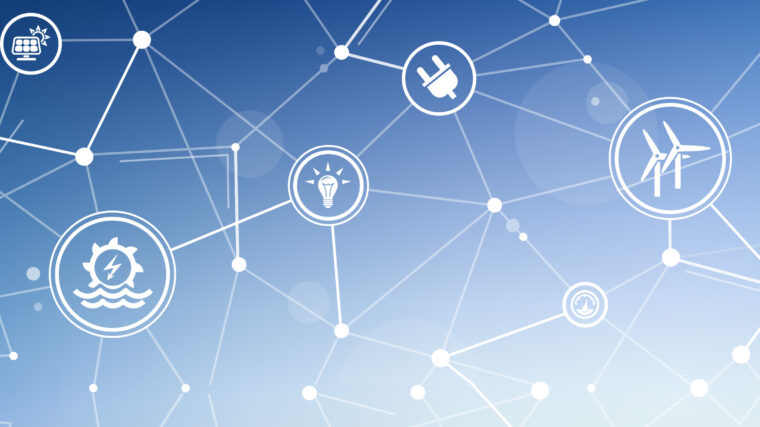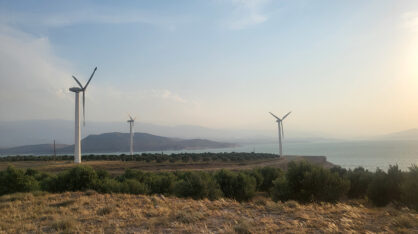Introduction
The growth in renewable energy technologies and the digital environment are creating new monetary, information, and energy flows in energy business supply chain. The new roles of consumers and collective energy initiatives, such as energy communities (e.g., Mihailova et al. 2022) in the energy supply chain creates challenges for the traditional business models (Frieden et al. 2021). For example, increased use of distributed generation has given individuals and communities greater control over electricity generation and consumption (IRENA, 2019). In addition, companies face increased regulatory and social pressures to create businesses that can achieve sustainable development goals, mitigating contributions to climate change (Mihailova, 2023). A business model depicts a company’s way of doing business and making money, and particularly profits represent the key requirements for any company’s survival and future existence. The new energy business supply chain paradigm that focuses on global business ethics and sustainable goal is creating new business indicators such as environmental, economic, and social considerations (Mihailova et al. 2022). Consequently, firms operating in the new energy supply chain business environment may need to redefine their business models, for example, by capturing the notions behind sustainable business models as a mode of value creation and delivery across economic, social, and environmental dimensions (Schaltegger et al., 2016; Stubbs and Cocklin, 2008). The new approach in defining business models should capture both financial and non-financial indicators while at the same meeting the demand of different stakeholders with different objectives and interests.
The goal of this article is to present an overview for business model in the new energy business supply chain environment. The first section presents the concepts of business model, and the second section describes the new business model in the new energy business supply chain environment and the conclusion is presented in the third section.
Concept of Business Model
A business model describes the ways that the company satisfies customer needs, attracts customers to pay for their product or service, and generates revenues from customer payment (Tecce, 2010; Osterwalder and Pigneur, (2010). The business model provides answer to the following questions: (i) who is the customer? (ii) what does the customer value? (iii) how do we make money in this business? (iv) what is the underlying economic logic that explains how we can deliver value to customers at an affordable cost? (Magretta, 2002).
These key questions have become the framework for various definitions of business models. Richardson (2005) summarizes the business model into three building blocks: value proposition, value creation and deliver, and value capture. Osterwalder et al. 2015 define that a successful business model consists of nine building blocks, including customer segments, value proposition, channels, customer relationships, revenue streams, key resources, key activities, key partnerships, and cost structure. Both dimensions of the business model are interrelated (see Table 1). The value proposition describes the customer segment and the benefits they derive from the product or service. The value creation and delivery consist of the resources, key partners, and channels required to deliver the value. The value capture provides information on the revenue streams and cost structure that creates economic value.
| Richardson (2005) | Osterwalder et al. 2015 | Description |
|---|---|---|
| Value proposition | Value proposition Customer segments | The benefit that customers receive from products and services. |
| Value creation and delivery | Key resources, Key partner, Key activities, Channels, Customer relationship | Describe the means (e.g. activities, partnerships, resources) by which value is delivered |
| Value capture | Revenue streams Cost structure | Value capture consists of revenues and costs, and describes the different types of revenue streams that generates economic value through the delivery of goods and services. |
Business Models in Energy Transition
The new energy business supply chain environment is characterized by decarbonized energy systems, decentralized renewable energies, and a digitalized environment. This has created new energy consumers, such as prosumers, because they consumer and produce electricity, and energy communities. Figure 1 presents the traditional energy supply chain environment. The energy and monetary flow in the traditional energy supply chain is unidirectional exhibiting a linear relationship between the energy provider and the consumer.

The new paradigm of the energy supply chain presented in Figure 2 shows a bidirectional flow of monetary and energy flows with new energy services, such as battery storage facilities, smart meters and smart charging. For example, a firm that is creating business innovation in electric vehicle charging stations creates cooperation with grid operators or manage relationships with e-mobility service providers (Mihailova et al. 2022). The new energy business supply chain environment encourages consumer active participation in energy generation meaning that consumers are no longer at the end of the value chain, but can also act as prosumers, generating and consuming their own power, either within the existing grid or off-grid (Lowitzsch et al. 2020; Mihailova, 2023). In addition, new energy environment creates new energy activities, such as energy storage providers, and e-mobility service providers. The new business environment has created innovative schemes, such as community ownerships models that enable renewable energy supply, in both off-grid and connected areas (IRENA, 2019). These new energy environments are creating the need to create new paradigms for creating innovative business models in the energy business supply chain.

Creating a Sustainable Business Model
Stubbs and Cocklin (2008) presented a sustainable business model (SBM) using sustainability concepts as a driver of the firm´s decision-making process. The new energy supply chain presents opportunity for developing innovative business models to integrate economic, environmental and social factors into their processes, and product design in the value proposition. The increase in distributed energy technologies and digitalization implies the creation of new revenue streams that are energy-related services to the consumers, rather than only supplying electricity. Table 2 presents a generic approach for developing business models in new energy supply chain environment.
| Business model dimensions | Drivers of business models in energy transition | Description |
|---|---|---|
| Value Proposition | Economic, social, and environmental values (e.g., Mihailova et al. 2022) | creating a low carbon, reliable, affordable and secure energy system, increasing grid reliability, creating productive use of energy for different social economic background |
| Value creation and delivery | Enabling technologies, e.g., behind-the-meter batteries electric-vehicle smart charging, renewable power-to-heat (residential), internet of things, artificial intelligence and big data, and blockchain. (IRENA, 2019) | creating prosumers, energy communities, and local energy production and consumption and bringing new actors such as energy storage system providers, grid managers, blockchain platforms, etc. |
| Value Capture | Revenues from energy services: energy advice, energy assets, energy management, and electricity supply. (IRENA, 2019) | Increased deployment of distributed energy resources along with the widespread availability of smart devices has created room for innovative business models to emerge, shifting the value from selling kilowatt-hours to service provision (IRENA,2020) |
Conclusion
This article presents an overview of the changes occurring in the new energy sector and their impact in designing innovative business models. Business models are required to ensure that innovations in technologies and market design have an impact in the society. The business models in energy transition require creating value propositions to highlight economic, environment and social issues. In addition, regulations must be implemented to support the business models that provide new energy services and revenues streams. More research is needed to create innovative business models for distribution system operators, transmission system operators, electric grid charging stations, prosumers, and energy storage providers. The evolving digitalization, the increasing role of artificial intelligence, and the demands of meeting social and environmental objectives are bringing news actors into the energy business environment. This coupled with the variability and uncertainty inherent in renewable energy technologies would ensure that new business models are dynamic as the share of renewable energy grows in the energy mix.




